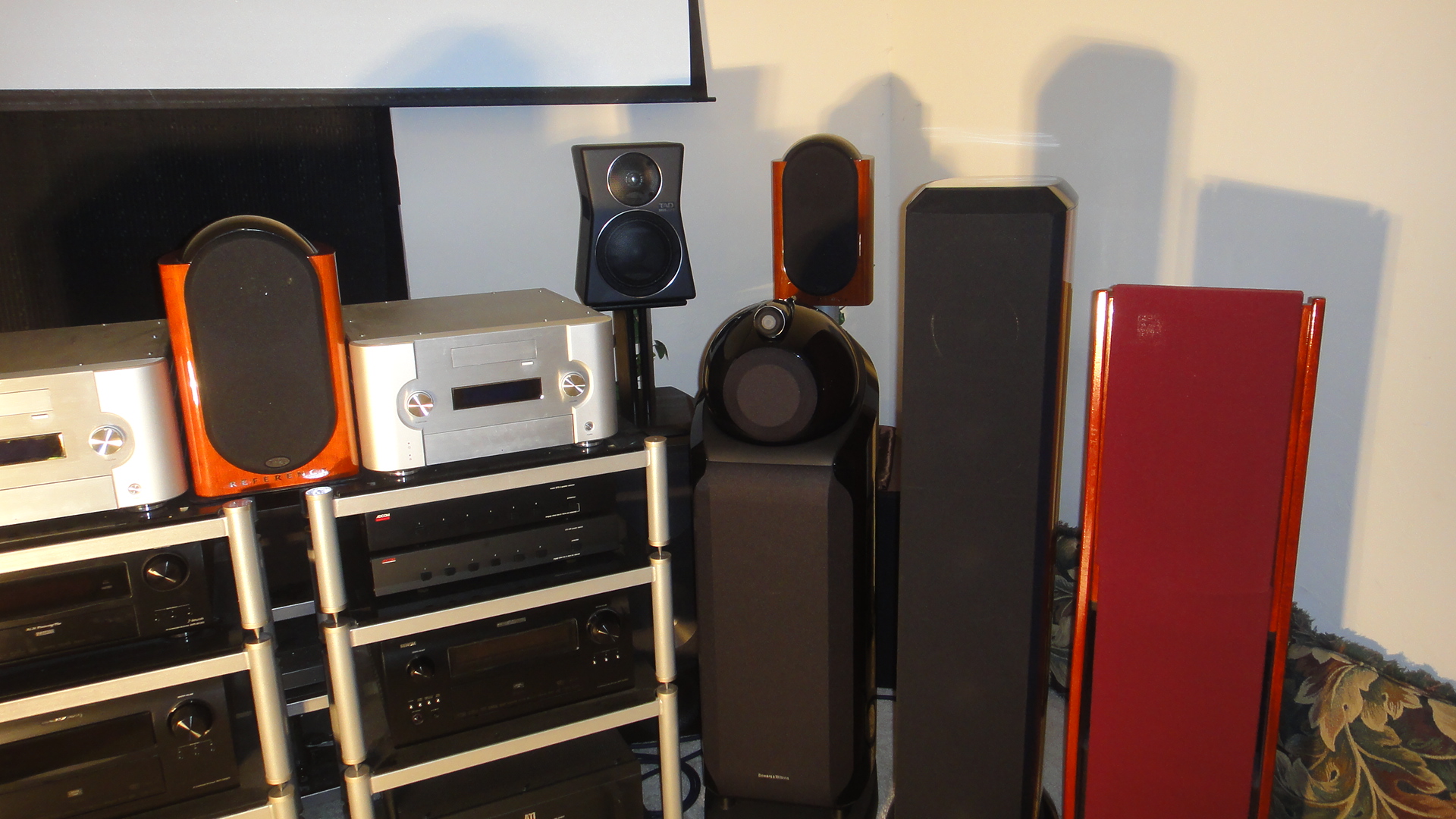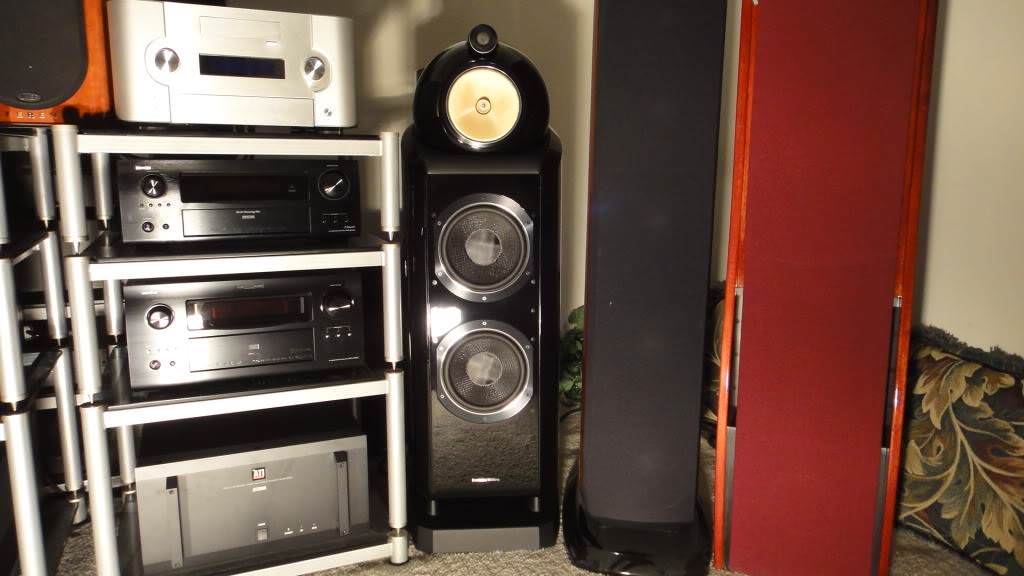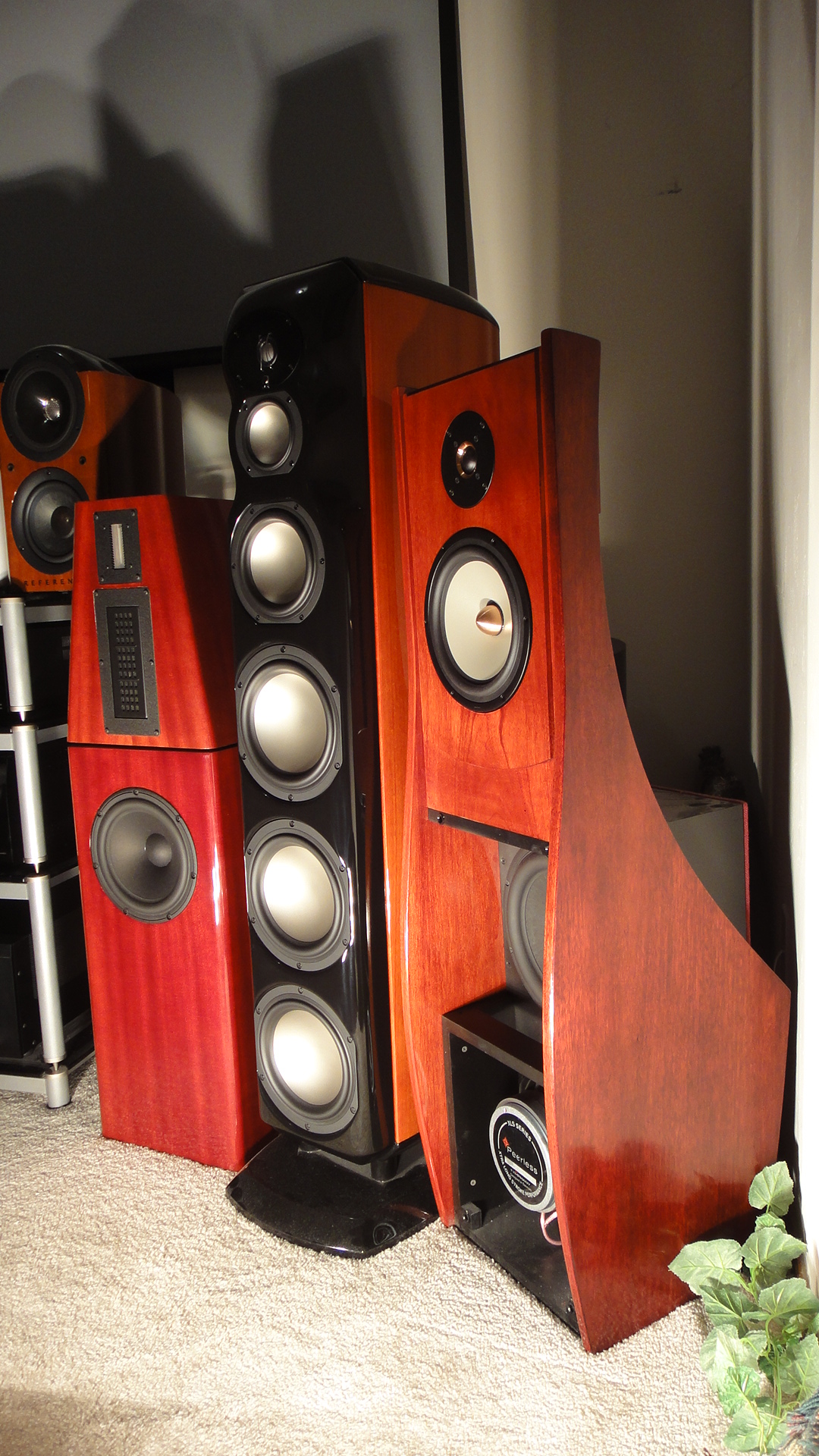RBH Modular Towers Review
In this review of the RBH Modular Towers, I will share my thoughts on three major points. First, I will talk about my speaker journey thus far. This journey has led me to form my speaker “identity”, which is the second point of discussion. Then I will talk about how the RBH Modular Towers fit my speaker identity.
Around 1994 I purchased five NHT Super-Zero bookshelf speakers and the 10” SW2 subwoofer, which was externally powered by an 80-watt amp. Unlike 99% of all subwoofers (which are powered by internal plate amps),my first ever subwoofer was externally powered. Speaker amplification was provided by the Acurus 200x3 (200 WPC) amps and Acurus RL11 analog preamp. I thought these speakers sounded great. The main drawback I noticed was that at higher volumes, the sound became distorted. These tiny speakers were very accurate, but they were not very dynamic.
Around 2008, I purchased the big-bad-bipolar Definitive Technology (DT) towers BP7000SC (fronts),BP7001SC (surrounds),and CLR3000 (center). These were loud, boisterous, and fun. The idea of having big towers that could produce good bass without the need of a subwoofer was exciting. The “subwoofer” was part of the speaker (built-in). I could easily adjust the bass level by turning the volume knob. But I noticed 3 main drawbacks. First, these speakers were bulky and heavy. Second, they didn’t have very accurate frequency response (FR) measurements. Accurate speakers have FR tolerance of no more than +/- 3dB. These DT speakers were more like +/- 4 to 5dB. Third, the sub amps were inside the speakers, not external. I’ve heard owners of these speakers and subwoofers complain about their sub amps failing. Some people had difficulty replacing these internal amps. So these speakers were not as accurate. And having amps inside the speakers meant possible reliability and replacement issues.
Between 2011 and 2014, I purchased a pair of Linkwitz Orion 3.2.1, Revel Salon2, B&W 802D2, Philharmonic 3, Focal Chorus 826V, Dynaudio Excite X32, TAD TSM-2201, ATC SCM7, and three pairs of KEF 201/2. I also purchased a pair of Rythmik D15SE subs and then replaced them with a pair of Funk Audio 18.0 subs. I thought all these speakers sounded great. They all sounded different. The Orion were dipole active speakers that required 8Ch of amps. The Salon2 had Beryllium tweeters. The 802D2 had Diamond tweeters. The KEF 201/2 had Titanium tweeters. The Philharmonic 2 had Ribbon tweeters. But as different as they were, I thought they all sounded great, especially with dual subs. The Salon2 and 802D2 towers looked awesome – big, bad, and bold. But like the DT BP7000SC and BP7001SC towers, the Salon2 and 802D2 towers were bulky and heavy.



These were speakers that I purchased and installed in my home. Speakers I’ve heard elsewhere include Funk Audio, Soundfield Audio, DALI, Monitor Audio, Magnepan, Martin-Logan, Paradigm, PSB, Phase Technology, Klipsch, and Polk. Most of these sounded pretty good. Again, I thought they all sounded even better with subwoofers.
That was my speaker journey up until 2014. What did I learn from this journey? Has this journey imprinted an “identity” in my mind about my personal perfect speaker? If I could design my own speaker, what would this dream speaker look like? I learned that I prefer big, bold, tall towers of power, but I don’t want to handle bulky tall heavy speakers. I want speakers that are accurate (response of +/-3dB or less) and very dynamic and can play reference levels easily without distorting. I want big subwoofers, but I don’t want a bunch of boxes everywhere. I want all my amplifiers to be external and separate from all cabinets and other devices. I’ve seen enough complaints about internal subwoofer amps failing. Many people can’t get replacement amps years later. Even if people can get replacement amps years later, the labor isn’t easy for many people. Companies who offer 5 – 10 years warranty on their speakers and subwoofers often offer only a 1 – 2 year warranty on the internal amps inside these same speakers and subwoofers. I don’t want my amplifiers trapped inside some cabinets! So these four main points form my speaker “identity”.
In 2014 I purchased five RBH SX-T2/R modular 60-inch-130-pound-towers (SX-T1/SX-1010) because I thought they fit my speaker identity perfectly. First, they are big, bold, tall towers of power. Yet because they are modular, each tower is divided into two 30-inch-65-pound sections, which makes them easier to handle. I get the big-bold without the bulky-heavy.
The Response of the SX-T2/R towers are about +/-2.5dB, which means they are accurate. The clarity, audio resolution, and detail from the SX-T2/R is as awesome as the best I’ve heard. And the dynamics seem almost limitless, greater than anything I’ve owned.
Each modular tower consists of a dynamic speaker on top and a big subwoofer on the bottom. An actual standalone dedicated big subwoofer serves as the bottom cabinet of the tower. Thus, a pair of towers comes with dual subwoofers on the same 2 footprints, not two additional footprints. Five towers and five subwoofers have a total of five footprints, not 10. I get big beautiful bass from five subwoofers without five additional big black boxes.
Because the speakers and subwoofer cabinets of the RBH SX-T2/R towers are unpowered (passive),all amplifications are external. It means I can use any high quality external amp to power the speakers and subwoofers. If I wanted to, I could use a Levinson, Theta, Krell, Macintosh, Boulder, or any other high-end amp to power both the top speaker cabinets and bottom subwoofer cabinets. Why treat my beautiful speakers to beautiful amps, but not treat my beautiful subwoofers to the same beautiful amps? Why would anyone? I power the top and bottom cabinets of my five SX-T2/R towers with the ATI AT2005 and AT3005 amps, respectively.
In 2017 I purchased a pair of RBH SVT modular towers (SV-831/SV-1212). They have the same four identity points: 1) big, but manageable, 2) accurate and dynamic, 3) true subwoofer bass, and 4) external amps.
The SVT towers are even bigger, bolder, and more beautiful than the SX-T2 towers. The SVT towers come standard in beautiful piano gloss finish, which reminds me of the aesthetics of my previous B&W 802 D2 and Revel Salon2 towers. The total weight on each 60-inch SVT tower is about 200 pounds, but each top/bottom cabinet is about 100 pounds and 30”. So they are big and heavy as a whole, but not so big and heavy and are very manageable as individual cabinets. My ATI amps weigh more than each speaker/subwoofer cabinet.
I’ve listened to the SVT towers in my home for over a year now. The imaging, soundstage, audio resolution, detail, clarity, and accuracy of the new SVT tower is as great as the SX-T2/R. The salient difference is the increased dynamics of the SVT tower. The surface area of the SVT tower’s tweeter is twice as large as the SX-T2 (4.72 vs. 2.36 square-inches). The surface area of the midrange drivers increased from 150.72 to 132.67 square-inches.
Each SX-T2 tower has dual 10-inch subwoofers. Each SVT tower has dual 12-inch subwoofers. Thus, the salient difference is the increased subwoofer capability of the SVT tower. My SVT towers are installed in my family room with over 20,000 cubic-feet of open space. I sit 18-feet away from the speakers. The bass from these towers are tremendous and easily fill the house. No other subwoofers are needed when you have a pair of SX-T2 or SVT towers. A 100-Watt-per-channel AV Receiver easily powers the top cabinets of my SVT towers, while a single RBH SA-500DSP amp powers both of the bottom subwoofer cabinets. I could easily use any high quality amp to power the bottom subwoofer cabinets.
In my review of the RBH SX-T2 and SVT Modular Towers, I’ve discussed my experience with many different types of speakers and how this lead me to the conclusion that the perfect speaker needs to satisfy four identity points: 1) big, but manageable, 2) accurate and dynamic, 3) true subwoofer bass, and 4) dedicated external amps for both speaker and subwoofers, not just the speakers. Both the SX-T2 (now discontinued) and new SVT towers meet these four identity points. Could the SVT towers be improved upon? I find it extremely difficult to imagine anything better. Perhaps using even bigger drivers might “improve” the dynamics and subwoofer to ultra-insane levels, but it would also push each cabinet beyond 30-inch-100-pound and this would not satisfy my speaker “identity”.